In “TrumpED 2025: School Choice Corporatization, Social Impact Finance, and the Dismantling of the Department of Education,” I documented how President Donald Trump has been pursuing education reforms that align with Project 2025, which calls for Trump to push federal “school choice” subsidies, including “Education Savings Accounts” (ESAs) and tax credits for corporate donations to “Scholarship Granting Organizations” (SGOs). In the wake of my report, Trump signed into law the omnibus “One Big Beautiful Bill Act,” ramming through a school choice rider that resembles the SGO tax credit provisions stipulated in the “Educational Choice for Children Act” (ECCA), which is championed in Project 2025.
School choice ESAs and SGO tax credits may afford parents and students with a broader menu of learning options, but not without simultaneously expanding Big Government, Big Business, and Big Tech control over public, private, and home education. To be sure, ESAs and tax-credited “scholarships” are primed to expand government regulation of private, religious, and home schools while publicly subsidizing ed-tech companies that data-mine students’ psychometrics for predictive learning analytics. Not only are ESAs and tax-credited “scholarships” positioned to extend the reaches of government bureaucracies and ed-tech corporations into public, private, and home educationl, but they go even farther, as they are also positioned to usher fin-tech companies into public-private partnerships between ed-tech corporations and government bureaucracies in order to digitally dole out ESAs and “scholarships” to students.
In fact, several fin-tech corporations, including ClassWallet, Odyssey, Student First Technologies (SFT), Merit International, and SAP Ariba, are already specializing in “digital wallets” that streamline ESA and tax-credited “scholarship” payments. Altogether, these fin-tech companies have already contracted with at least 32 state governments to facilitate ESA and “scholarship” payments for public-private school choice programs. Some of these fin-tech corporations, such as ClassWallet, have also contracted with the United States (US) Federal government to digitize emergency education funding for virtual-online “distance learning” during COVID lockdowns. Many of these fin-tech companies and their digital wallets have also been promoted by a Koch–funded regiment of corporatist State Policy Network (SPN) think tanks, including the Heritage Foundation, the American Enterprise Institute (AEI), EdChoice, and ExcelinEd –– all of which are affiliates of Project 2025 contributors.

The corporatization and digitization of public education are problematic enough, but the fin-tech privatization of school choice subsidies through digital wallets is ultimately a stepping stone toward the public-private federalization of blockchain “distributed ledger technologies” (DLTs) that transfer, track, and trace all government funds through programmable cryptocurrencies, such as “stablecoins,” which have their value anchored to that of the US dollar. Pledging to crown America as the “world capital” of crypto and AI, Trump has not only minted his own “USD1” stablecoin, but he has also signed legislation legalizing digital stablecoin dollars in addition to signing executive orders to establish stablecoin regulations along with a US “Strategic Bitcoin Reserve” and a US “Digital Asset Stockpile.” To achieve crypto and AI dominance, Trump has joined forces with top PayPal Mafia bosses, including Elon Musk, Peter Thiel, and David Sacks, along with their venture capitalist (VC) cronies, such as Marc Andreessen, who together have laid the groundwork for the evolving digital economy by bankrolling digital wallets, blockchain DLTs, cryptocurrencies, and crypto exchange platforms.

In short, the corporatist contingent of the Koch-SPN think tanks behind Project 2025 is advocating for school choice ESAs and “scholarships” to be streamlined by fin-tech companies while the Silicon Valley technocrats of the PayPal Mafia are guiding Trump to accelerate the evolution of the digital economy through federal government adoption of blockchain DLTs and stablecoins. As Trump’s “PayPal Presidency” onboards federal blockchain systems, the school choice corporatization of the Koch-SPN cartel and the fin-tech disruptions of the PayPal Mafia are set to converge in a public-private digital wallet industry that tokenizes ESA and “scholarship” subsidies through stablecoins programmed by AI for government-restricted purchasing of ed-tech products and services. Synergizing the neo-conservative, beltway-libertarian, and VC Silicon Valley blocs of the Republican Party, the Koch-SPN and PayPal Mafia powers behind Trump are setting the stage for fin-tech digitization of school choice subsidies in order to upgrade public-private ed-tech systems for AI social credit scoring in the blockchain economy of the Fourth Industrial Revolution (4IR).
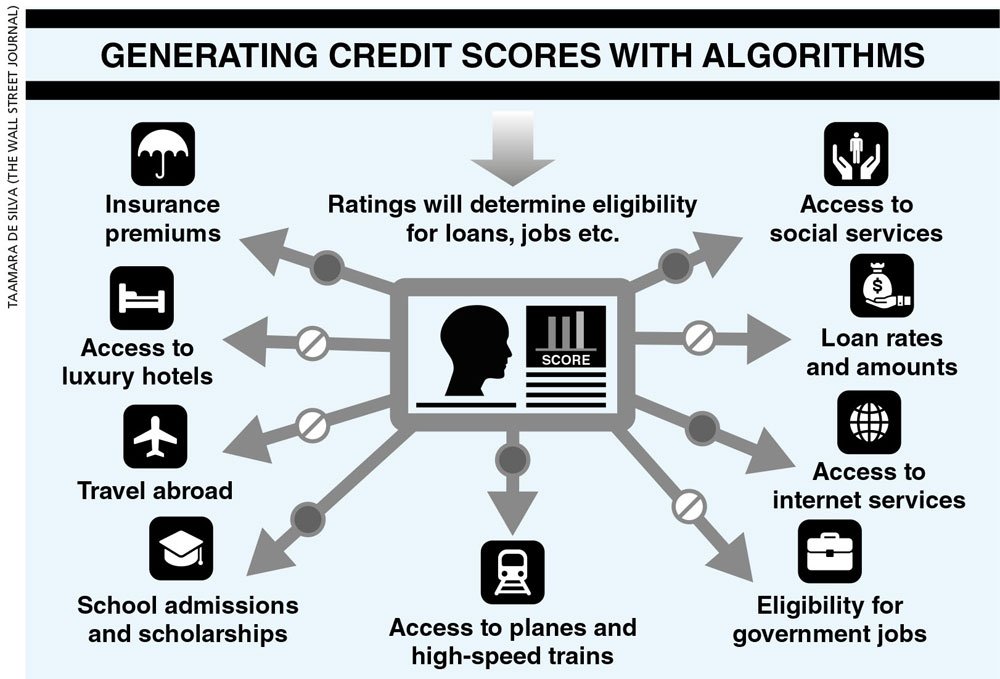
To SPN a Web: School Choice Corporatization Meets Fin-Tech Digitization
As I document in “TrumpED 2025,” the Trump administration’s education reforms are following the Project 2025 “Playbook.” Titled Mandate for Leadership: The Conservative Promise, Project 2025 was authored by associates of the Koch–funded SPN, which is a consortium of neo-conservative and beltway-libertarian think tanks, including the Heritage Foundation and the AEI, along with corporatist school choice think tanks, such as EdChoice, and ExcelinEd. Not only have these Koch-SPN think tanks advocated for school choice ESAs in alignment with Project 2025, but they have also called for corporate fin-tech overhauls to privatize payment and accounting systems for government ESA subsidies.
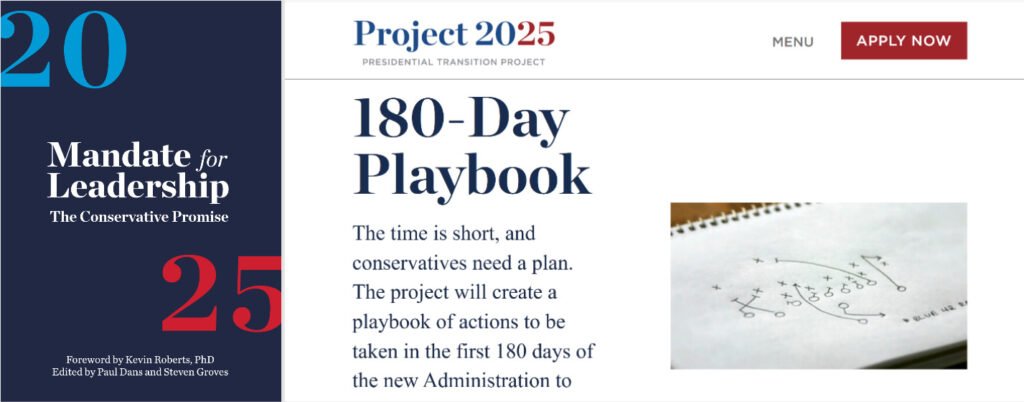
Heritage Foundation, Project 2025 “Playbook”
At the helm of Project 2025 is the Heritage Foundation, which is the “arch-conservative” think tank that has set the mold for Republican policies for more than a half century. In addition to directing Project 2025, which calls for converting federal education entitlements into school choice ESAs, the Heritage Foundation serves on the Project 2025 Advisory Board. The main author of Project 2025’s “Department of Education” chapter is Lindsey M. Burke, who is the Director of the Heritage Center for Education Policy where her Project 2025 co-author, Jonathan Butcher, is a Senior Research Fellow. In a Heritage Foundation article titled “Financial Technology and Parental Choice in Education,” Butcher calls for fin-tech corporatization to streamline payment and accounting systems for government ESAs.

According to Butcher, school choice ESAs are model financial vehicles for subsidizing private schools and ed-tech corporations with public tax dollars because ESAs enable “parents [to] customize their children’s education” by purchasing an array of “educational products and services.” In particular, ESAs enable “[p]arents [to] buy online classes, hire a personal tutor, . . . pay private school tuition,” and purchase ed-tech products.
While ESAs might deliver a more dynamic menu of customizable choices, the sheer scale of such individualized customization presents financial accounting and transaction complications that impede parents’ abilities to efficiently access the full menu of private schools and ed-tech companies that are eligible to receive ESA money. To resolve these transactional and accounting complications and, thereby, streamline the customization of education choice, Butcher advocates for ESA fin-tech that can be programmed to quickly verify a wider range of authorized educational services and products and, in turn, speedily transfer ESA payments to certified schools and vendors. Butcher avers that ESA payments:
“need a system that allows parents and students to make multiple purchases each fiscal quarter, perhaps even multiple purchases each day, while limiting such transactions to lawful educational products and services.
The system needs to block unlawful transactions and facilitate payment to multiple vendors without using cash—all characteristics of the payment services becoming available today through financial technology.”
To support his case for fin-tech privatization of ESA administration, Butcher describes how Visa and several fin-tech companies, including Venmo, PayPal, and BenefitWallet, have already contracted with the state governments of Arizona and Nevada to facilitate tax-funded ESA payments.
According to Butcher, next-generation fin-tech, such as ClassWallet, which specializes in school choice vouchers, “scholarships,” and ESAs, should replace prepaid Visa and PayPal ESAs in order to save parents money and prevent fraudulent use of ESA tax subsidies. Butcher relays that ESA transactions conducted through PayPal incur a fee that parents must pay with each purchase. Butcher also conveys that, although prepaid Visa ESAs are programmed with purchasing codes that restrict products or services that do not fall under authorized categories, some of those codes, such as Walmart product codes, are imprecise, creating loopholes for families to buy unauthorized products or services with government ESA subsidies. Conversely, Butcher highlights how next-generation fin-tech, such as ClassWallet, does not incur a fee and can be programmed to transfer funds only to specifically authorized schools, ed-tech companies, and educational service vendors.
Hyping next-gen fin-tech as the future of ESA administration, Butcher advises state governments to:
“outsource full or partial implementation of education savings accounts to private organizations. State departments of education should provide policy guidance concerning eligible educational services and products for purchase, but state lawmakers should look to companies that specialize in fintech in order to streamline transactions and prevent the expansion of government activity. State agencies should not create new data systems or hire new staff. Instead, the state should contract with private entities to manage payment processing and audits.”
In brief, Butcher’s Heritage whitepaper rationalizes fin-tech privatization of school choice ESAs on the basis of ostensibly eliminating government waste, fraud, and abuse, which is the same rationale that the Trump administration provides for directing the US Department of Government Efficiency (DOGE) to chainsaw public education and other tax-funded programs.
In addition to the Heritage Foundation, another Koch-SPN think tank that has espoused fin-tech privatization of ESAs is the American Enterprise Institute (AEI) where Butcher’s Project 2025 co-author, Max Eden, has served as a Research Fellow, a Senior Fellow, and an Education Policy Program Manager. In an AEI article titled “Implementing K–12 Education Savings Accounts,” Michael Q. McShane, who is an AEI Adjunct Fellow, asserts that “there should be more competition in the ESA payment platform industry. Part ‘govtech’ and part ‘fintech’ solutions should be able to straddle the worlds of private industry and government to make payments fast and fluid.” According to this AEI whitepaper, governments should contract with innovative fin-tech corporations that make the “use of ESA dollars seamless and straightforward.” To achieve these fin-tech efficiencies, McShane calls for legislation and regulations that appoint “a private entity to administer the day-to-day details of the program (approving expenditures, paying schools and other providers, etc.).”
McShane is also the Director of National Research at another Koch-SPN think tank, EdChoice, where Project 2025 author Lindsey M. Burke is a Fellow. Formerly known as the Milton and Rose Friedman Foundation for Educational Choice, EdChoice has also advocated for fin-tech privatization of ESAs. In an “EdChoice Policy Toolkit” titled “ESA Financial Accountability: Reimbursements, Debit Cards or Online Platforms?,” EdChoice touts that “[o]nline [fin-tech] platforms like those developed by ClassWallet and SAP Ariba provide the highest level of [ESA] financial accountability with the least amount of bureaucracy.” According to this EdChoice “Toolkit,” “[s]ince the [fin-tech] platforms only allow the purchase of eligible products and services, this model provides the highest form of financial accountability. Moreover, it is much more cost-effective than the other models because it does not require a huge staff to pore over innumerable receipts.”

Another associate of yet another Koch-SPN think tank, the American Federation for Children (AFC), has championed “digital wallets,” such as ClassWallet, as the most cutting-edge fin-tech upgrade for privatizing ESAs. Sarah Raybon, who is the Senior Director of Strategic Initiatives at ClassWallet, “has worked to expand educational opportunities through . . . the American Federation for Children,” according to her ClassWallet employee profile. In a ClassWallet article titled “Ensuring Transparency with Education Savings Account Programs,” Raybon advises state governments to privatize “ESA programs” through public-private “digital wallet” contracts with fin-tech corporations in order to “meet the needs of all stakeholders,” including “[p]olicymakers,” “[p]rogram participants,” and “[s]tate administrators.” Raybon explains how:
“[ESA] [p]rogram administrators can set rules with digital wallets around [ESA] purchases to avoid the misuse of [ESA] funds, helping program administrators comply with legislative requirements and easily track where dollars are spent. The technology provides administrators with real-time tracking and reporting options. Real-time transaction tracking and digital record-keeping consolidate account data into one place, streamlining audit reporting, compliance and transparency.”
In addition to advancing school choice corporatization and digital wallet privatization through the AFC and ClassWallet, Raybon has also served as the Director of Communications and Engagement at the Arizona Department of Education (ADE) where she administrated facets of the state’s “Empowerment Scholarship Account (ESA)” program, which is America’s first-ever ESA program. Today, the ADE website officially states that “ClassWallet is the financial management platform for the [Arizona] ESA program.”

It is worth noting here that the AFC, which was founded, financed, and chaired by former US Secretary of Education, Betsy DeVos, operates a “Growth Fund” that was formerly known as the Alliance for School Choice where Project 2025 co-author, Robert S. Eitel, served as the “national director.” Under Trump’s first presidency, Eitel served as “Senior Counselor” to Secretary DeVos, who has also bankrolled EdChoice, the Heritage Foundation, and the AEI.

On left: Robert S. Eitel – Source | Middle: AFC Growth Fund | On right: Jim Blew – Source
It is also worth noting here that Secretary DeVos staffed her Department of Education with Neil Ruddock, Andrew Kossack, and Josh Venable, all of whom worked for Jeb Bush’s Foundation for Excellence in Education (ExcelinEd), which is yet another Koch-SPN think tank that has also been advocating for fin-tech privatization of ESAs. In an ExcelinEd blog article titled “Unlocking the Full Potential of Education Savings Accounts: Navigating Expense Review for Maximum Impact,” the ExcelinEd Education Choice Policy Director recommends administering ESAs through “multiple systems for payment methods, such as an online marketplace for direct purchases” facilitated through “various payment options,” including “digital wallets.” For precision accounting and transfer of digital ESAs, ExcelinEd recommends combining fin-tech with artificial intelligence (AI) that can “streamline the expense review process. AI can rapidly process and approve clear-cut cases while flagging more complex expenses for manual review, thereby balancing efficiency with oversight.” ExcelinEd adds that “[i]deally, the [AI] technology could ‘learn’ over time, reducing the number that require manual review.”
In sum, Project 2025 author, Jonathan Butcher, has directly hyped fin-tech privatization of ESAs. Meanwhile several Koch-SPN think tanks, including the Heritage Foundation, the AEI, and EdChoice, which are affiliated with Project 2025 authors, such as Butcher, Lindsey M. Burke, and Max Eden, have also been calling for fin-tech privatization of ESAs. At the same time, another Koch-SPN think tank, ExcelinEd, has likewise been cheerleading for fin-tech corporatization of ESAs. Considering that Trump’s push to “dismantle” the Department of Education has been following the Project 2025 “Playbook,” which calls for a portion of federal education entitlements to be converted into ESAs, the trajectory of Trump’s school choice reforms is palpably bent toward greenlighting the fin-tech ESA overhauls touted by Project 2025 affiliates and their Koch-SPN cronies.
Venture Capital & School Choice Fin-Tech: From Digital Wallets to Blockchain IDs
Leading fin-tech corporations, such as ClassWallet, Odyssey, Student First Technologies (SFT), Merit International, SAP Ariba, and BenefitWallet, have already been contracting with at least 31 state governments to streamline public education expenditures, including school choice subsidies, such as ESAs and tax-credited “scholarships.” These fin-tech companies have been bankrolled by disruptive venture capital firms, such as Stand Together Ventures Lab, which is associated with the Koch–SPN syndicate, along with Alumni Ventures, Bling Capital, and Andreessen Horowitz, which share common investments with PayPal Mafia don, Peter Thiel. Bolstered by venture capital and public-private partnerships with more than 60% of America’s State governments, these premier fin-tech companies are poised to not only privatize the Federal school choice ESAs championed by Project 2025 and its associate SPN think tanks, but to also upgrade digital wallets with blockchain DLTs and AI analytics backed by Thiel and other PayPal Mafiosos. In turn, school choice subsidies and other public education funds can be doled out by AI to pay for a menu of ed-tech products and services that are algorithmically prescribed based on students’ predictive social credit analytics extrapolated from their learning metrics logged into their blockchain digital IDs.
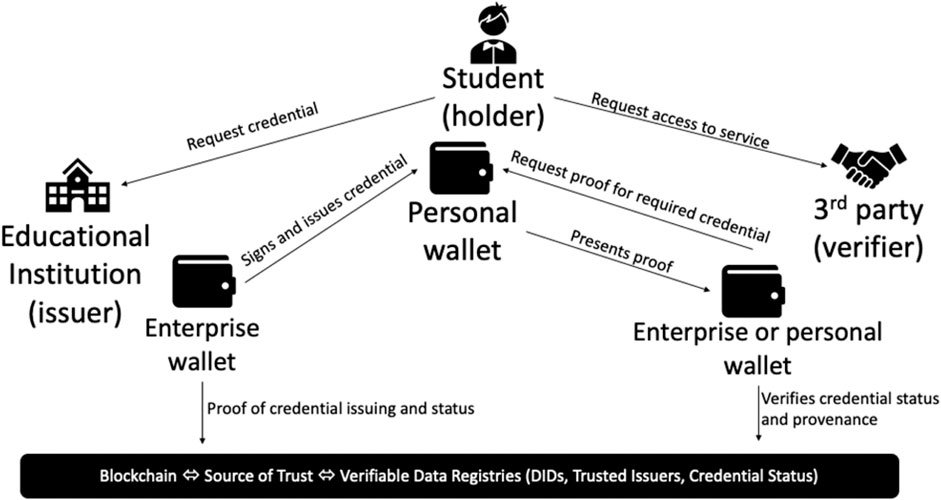
One of the most prominent fin-tech corporations facilitating ESA transactions is ClassWallet, which has sold its “patented digital wallet” services to at least 18 State governments, including Arkansas, Alabama, Florida, Georgia, Idaho, Indiana, Massachusetts, Missouri, Michigan, New Hampshire, New Mexico, North Carolina, Oklahoma, South Carolina, Texas, Utah, Virginia, and Washington. According to a company press release, ClassWallet has been bankrolled by Lazard Family Office Partners: a subsidiary of Lazard Inc., which is a World Economic Forum (WEF) partner that has employed Nathaniel Rothschild, who is a WEF Young Global Leader, and Vernon Jordan, who was an advisor to President Bill Clinton and a member of both the Trilateral Commission and the Bilderberg Group. It is worth noting here that it was President Clinton who signed into law the first Federal school choice bill authorizing private charter school corporations to be publicly subsidized by US tax dollars.
If you’ve never heard of ClassWallet, it made the Inc. 5000 “prestigious annual list of the fastest-growing private companies in America” for the third year in a row in 2024 when it was ranked as the “88th fastest-growing software company.” In 2023, ClassWallet, which partners with Amazon, was ranked by Deloitte at number 114 on the Deloitte Technology Fast 500 list. Prior to rising through the Deloitte and Inc. 5000 charts, ClassWallet capitalized on the COVID restrictions of 2020, 2021, and 2022 when it became a go-to for transferring emergency relief funds issued through the Education Stabilization Fund (ESF) under the Coronavirus Aid, Relief, and Economic Security (CARES) Act, the American Rescue Plan Act, and the Coronavirus Response and Relief Supplemental Appropriations Act.
In the wake of COVID lockdowns, ClassWallet has strived to expand its fin-tech platform beyond emergency ESF relief and school choice subsidies by branching out to digitally transfer public funds from other government bureaucracies, including the Federal Emergency Management Agency (FEMA) and the US Department of Housing and Urban Development (HUD). ClassWallet has also sold its digital wallet services to transmit payouts from “Early Childhood Care Grants” issued through the Child Care and Development Fund of the US Department of Health and Human Services (HHS).
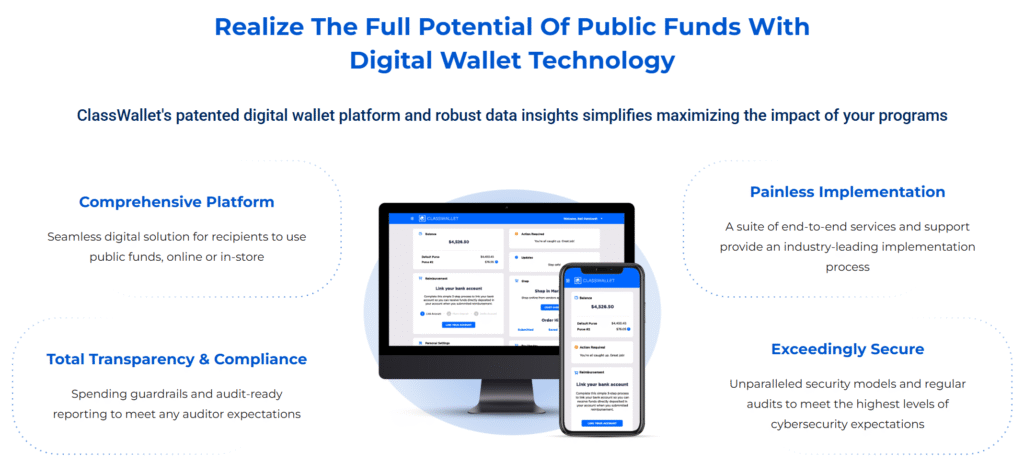
Inversely, BenefitWallet initially developed its digital wallet for disbursing tax-advantaged funds from Health Savings Accounts (HSAs) before expanding its fin-tech platform to disseminate school choice tax subsidies from ESAs. It is worth noting here that BenefitWallet was formerly a subsidiary of the Xerox corporation’s spin-off company, Conduent, where Council on Foreign Relations (CFR) member Michael Montelongo and US Ambassador to the United Nations (UN) Margarita Paláu-Hernández serve on the Board of Directors. Currently, BenefitWallet is a subsidiary of HealthEquity Inc. where the Board of Directors includes executives who formerly held “leadership positions” at PayPal, Mastercard, Bank of America, Citibank, Fidelity Equity, Charles Schwab, Western Union, Hartford Financial Services Group, and the New York Stock Exchange.
Another fin-tech corporation that manages ESA commerce is Odyssey, which is “the first [fin-tech] company designed specifically for education savings accounts (ESAs).” According to its company website, Odyssey’s fin-tech platform “connect[s] families, states, and vendors” through “[s]ecure digital student wallets” that optimize “[e]nd-to-end data retention and payment processing” by “[a]utomat[ing] verification and expense approval” of ESA transactions. To date, Odyssey has sold its digital wallet services to at least 7 State governments, including Georgia, Iowa, Louisiana, Wyoming, Idaho, Missouri, and Utah.
Odyssey, which partners with Amazon, has been bankrolled by several venture capital firms that are adjacent to PayPal Mafia godfather, Peter Thiel. For example, Odyssey has been financed by Bling Capital, which is also invested in Palantir: the AI predictive analytics corporation founded and directed by Thiel and his fellow Bilderberg Steering Committeeman, Alex Karp. Odyssey has also been funded by Marc Andreessen’s venture capital firm, Andreessen Horowitz, which has shared common investments with Thiel’s venture capital firm, Founders Fund. In particular, both Andreessen Horowitz and Thiel’s Founders Fund have financed Elon Musk’s SpaceX and Palmer Luckey’s Anduril Industries, both of which have contracted with Trump’s Department of Defense, which also contracts with Palantir. It is worth noting here that Odyssey has also been bankrolled by Tusk Venture Partners, which has shared common blockchain and crypto industry investments with Thiel’s Founders Fund; and has also invested in Coinbase, a cryptocurrency exchange platform that traffics in digital crypto wallets.

It is also worth noting here that Odyssey was a finalist for the 2023 Yass Prize awarded by billionaire financier Jeff Yass, whose School Freedom Fund teamed up with Betsy DeVos’s AFC in 2024 to lobby legislators to sponsor and vote for school choice bills that greenlight ESAs, vouchers, and tax-credited “scholarships” through which “federal funding follow[s] students – rather than government assigned schools.” Yass, who has served as an Executive Associate of the Heritage Foundation, endows his Yass Prize for Sustainable, Transformative, Outstanding, and Permissionless (STOP) Education in partnership with the Center for Education Reform (CER), which also partners with the Koch–backed SPN behind Project 2025. In fact, the CER, which collaborates with other SPN think tanks, such as the AFC, EdChoice, and ExcelinEd, was founded by US Department of Education official, Jeanne Allen, who has served as a Manager of the Heritage Center for Education Policy where Project 2025 authors Lindsey M. Burke and Jonathan Butcher currently serve as Director and Senior Research Fellow respectively.

Along with Odyssey, Andreessen Horowitz has also financed Merit International, which is an “ID-tech” company that also provides fin-tech services through digital wallets. According to its company website, Merit International manages digital payment systems for “ESA, microgrant, and tax-credit programs” governed by the Ohio State Department of Education and Workforce and the Kansas State Office of Recovery. Synchronously, Merit authenticates “digital credentials” through a “digital identity ecosystem” engineered to optimize “Grants Management,” “Emergency Management,” “Workforce Development,” and “Professional Licensing.” Additional investors in Merit’s ID-tech/fin-tech system include Experian, which is one of the “Big Three” credit reporting companies; Alumni Ventures, which is a strategic “co-investor” with both Andreessen Horowitz and Thiel’s Founders Fund; and Stand Together Ventures Lab, which is an offshoot of the Stand Together non-profit corporation founded by Charles Koch, who also founded the Stand Together Trust, which is a partner with the SPN behind Project 2025.

While Merit International is combining digital ID-tech with digital wallet fin-tech, Student First Technologies (SFT), which partners with Mastercard, is combining fin-tech with AI-tech to enhance ESA payment and accounting systems. To date, SFT has serviced at least 18 state governments by tracking, tracing, and transmitting “ESA,” “Microgrant,” and “Tax Credit Scholarship” transactions through its “end-to-end” AI-enhanced Theodore platform, which transfers government school choice funds from digital wallets to authorized schools and vendors offering certified educational products and services. According to the SFT company website, Theodore “[e]mpower[s] each stakeholder” with an SFT AI program called QuinnIQ, which “is a comprehensive ‘human-in-the-loop’ ML (Machine Learning) learning [sic] model that optimizes and automates ESA program expense verification.”
By combining AI-tech, fin-tech, and ID-tech, the digital wallet industry is stacking the building blocks for a cybernetic matrix through which AI can data-mine predictive social credit analytics by tracking and tracing how the transmission of school choice subsidies through blockchain student ID ledgers correlate with specific ed-tech learning outcomes. In fact, at least one fin-tech platform, SAP Ariba, which collaborates with WEF partners such as IBM and Amazon, disburses school choice “scholarships” issued by the Florida State Department of Education in addition to interfacing blockchain applications and AI tools that monitor “Environmental, Social, and Governance (ESG)” scores and other social credit metrics.

In sum, now that fin-tech corporations such as SAP Ariba, Merit International, Odyssey, ClassWallet, and BenefitWallet have spread their digital tentacles throughout the public-private school choice marketplace, the stage is set for these fin-tech disruptors to capitalize on the federal ESAs and tax-credited “scholarships” being pushed by the architects of Project 2025. At the same time, these fin-tech trailblazers, which are bankrolled by venture capitalists connected to the PayPal Mafia and the Koch-SPN syndicate, are positioned to upgrade their digital wallet platforms with blockchain ledgers and AI analytics such as those that have been financed by Thiel and other PayPal Mafia technocrats. Once such DLTs are linked to digital student IDs, the convergence of blockchain-tech, ID-tech, and fin-tech will enable AI-tech to data-mine predictive social credit analytics by tracking and tracing cybernetic feedback loops between school choice subsidies and ed-tech learning outcomes tabulated on digital student ID ledgers.
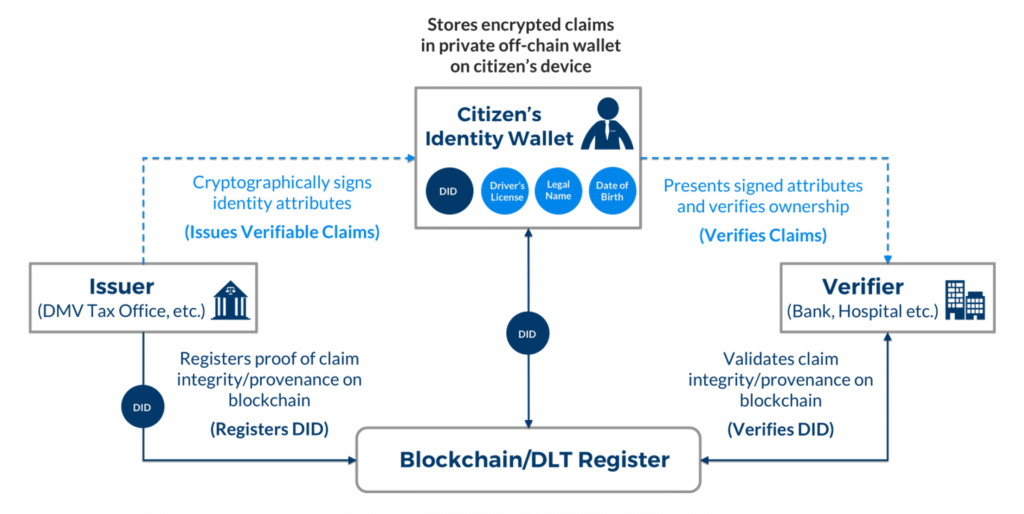
PayPal Mafia 2.0: Blockchain Broligarchy Rolls Out Stablecoin Tokenization of Public Funds
The digital fin-tech privatization of ESAs, tax-credited “scholarships,” and other school choice subsidies being advanced by the Koch-SPN cartel is just one facet of a comprehensive game plan for establishing a blockchain social credit economy governed by an AI technocracy. To be sure, the proliferation of digital wallets for privatizing school choice subsidies is nothing less than a stepping stone toward the corporate fin-tech digitization of all public subsidies through blockchain DLTs and “stablecoins” that can be programmed by AI for government–restricted purchases.
In fact, Trump is already federalizing stablecoins while nationalizing a “Crypto Strategic Reserve” with clout from PayPal Mafia technocrats, including David Sacks, Peter Thiel, and Elon Musk, along with fellow VC disruptor, Marc Andreessen. Prior to courting Trump, these PayPal oligarchs and their VC sidekicks have altogether been financing foundational blockchain infrastructure, including digital wallets, crypto exchanges, and stablecoin platforms, along with the most valuable crypto coins, including those which Trump has proposed for his Crypto Strategic Reserve. Now, as Trump pushes for public-private school choice fin-tech along with stablecoins, the corporatist Koch-SPN machinations of the neo-conservative and beltway-libertarian wings of the Republican Party are being melded with the technocratic aims of the PayPal Mafia on the VC Silicon Valley wing of the party in order to advance blockchain DLTs and AI–programmed crypto for social credit cybernetics in the 4IR.

It is not happenstance that the school choice corporatization stratagems of the Koch-SPN think tanks behind Project 2025 are converging with the fin-tech digitization schemes of the PayPal Mafia under the Republican administration of President Trump. PayPal Mafia don Peter Thiel, who has been labeled Trump’s “shadow president,” holds a long track record of rightwing political activism. In addition to his Silicon Valley pedigree of funneling venture capital into disruptive fin-tech startups, Thiel, who is a WEF member, has spearheaded neo-conservative “culture war” propaganda; proselytized corporatist “beltway” libertarianism; and collaborated with cabinet-level officials in several Republican presidential administrations.
Through Stanford University, Thiel has bolstered neo-con culture wars by serving on the board of the college’s conservative satellite think tank, the Hoover Institution, and by founding the college’s popular conservative magazine, The Stanford Review, where he helmed the publication as the founding editor. Established in 1987 as a culture war garrison against the “social justice” polemics of Jesse Jackson’s Rainbow PUSH Coalition, Thiel’s Stanford Review has since published a battery of “anti-woke” polemics that have fueled the Trumpian culture wars which paved the way for the current “PayPal Presidency.” Along with Thiel, other Stanford Review editors include the following roster of technocrats and venture capitalists who joined forces with Thiel to set up PayPal, Palantir, and the Founders Fund:
- David Sacks, who is a PayPal Mafia “original gangster.”
- Ken Howery, who is another PayPal Mafia “OG” and a co-founder of the Founders Fund.
- Joe Lonsdale, who is a co-founder of Palantir.
- Stephen Cohen, who is another co-founder of Palantir.
It is worth noting here that another Stanford Review editor, Candice Jackson, would go on to serve as US Assistant Secretary of Education for Civil Rights under Betsy DeVos.

During Thiel’s enrollment at Stanford, he served as a speech writer for US Secretary of Education William Bennett, who has championed school choice and collaborated with several corporatist think tanks, including the Heritage Foundation and the American Legislative Exchange Council (ALEC), which are both partners with the SPN and members of the Project 2025 Advisory Board. In 2023, Bennett joined forces with Betsy DeVos and Jeff Yass, along with ALEC, the AFC, the CER, EdChoice, and ExcelinEd, to lobby Pennsylvania legislators to pass a bill authorizing tax-funded school choice “scholarships” which can be paid through digital wallet fin-tech. Yass’s CER partner, Jeanne Allen, served in the US Department of Education under Secretary Bennett while Secretary DeVos was privately advised by Thiel, who also served on Trump’s first presidential transition team.
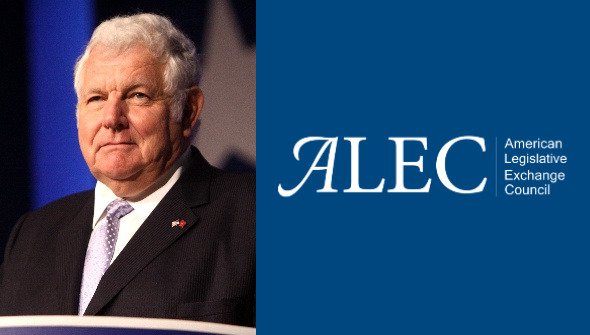
Before Trump’s rise to presidential power, Thiel was also a contributor to the corporatist Cato Institute: the beltway-libertarian think tank which, like the Heritage Foundation, has played a vital role in shaping Republican politics for decades. Founded by Charles Koch, the Cato Institute, which is a partner with the SPN cartel, is currently staffed by Project 2025 co-author Andrew Gillen, who serves as a “Policy Scholar” and a “Research Fellow” at Cato’s Center for Educational Freedom. It is worth noting here that Gillen, who is a contributor to the Heritage Foundation, has also served as a “Program Officer” for the Charles Koch Foundation where another Project 2025 co-author, Erin Valdez, has served as a “Program Manager” for “Educational Partnerships.”

In a 2009 Cato publication, Thiel authored an article titled “The Education of a Libertarian,” in which he professed, “I no longer believe that freedom and democracy are compatible.” Hyping his trailblazing PayPal empire and its ambitions to advance the fin-tech “creation of a new world currency, free from all government control and dilution,” Thiel proclaimed that “the great task for libertarians is to find an escape from politics in all its forms,” including all forms of democracy. To realize his anarcho-corporatist utopia, Thiel resolved that libertarians should leverage the industrialization of disruptive fin-tech and other “new technologies that may create a new space for freedom” and, thereby, avert the so-called “tyranny” of the “unthinking demos.”
Anticipating an upsurge in such new “liberatory” technologies, Cato published a 2021 article titled “Charting the Fintech Future,” which advocates for digitally overhauling banking systems with “Chartered Fintechs” and “Stable Value Crypto Banks” comprised of “blockchain payments network[s]” that traffic in “Stable Value Cryptocurrencies.” Otherwise known as “stablecoins,” such “stable value crypto coin[s]” have been propped up by venture capital from Thiel and other PayPal Mafia goodfellas and associates. It is worth noting here that Cato has also promoted the privatization of school choice ESAs through fin-tech corporations such as BenefitWallet.
Today, Thiel has been aptly crowned the Republican “kingmaker” as he not only bankrolled Trump’s first presidential campaign, but he has also been instrumental to Vice President JD Vance’s rise to political power. In addition to financially backing Vance’s bid for Ohio Senate, Thiel, along with fellow Bilderberg Steering Committeeman Eric Schmidt, also backed Vance’s venture capital firm, Narya Capital, which is invested in AI and biotech corporations. Not only did Thiel groom VP Vance, who was an investor at Thiel’s Mithril Capital before setting up his own VC firm, but Thiel has also turned out to be a formative influence on the selection of President Trump’s current roster of executive appointments, which is filled with former employees of Thiel’s Big Tech corporations and venture capital firms. These include:
- Palantir Senior Advisor Jacob Helberg, who serves as the Under Secretary of State for Economic Growth, Energy, and the Environment at the US Department of State.

- Mithril Capital Management Director Jim O’Neill, who serves as the Deputy Secretary of Health and Human Services.

- Thiel Capital Principal Michael Kratsios, who serves as the Director of the White House Office of Science and Technology Policy.
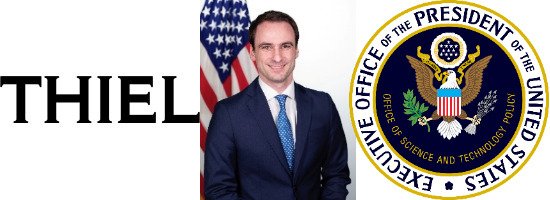
- PayPal Mafia gangster and Founders Fund co-founder Ken Howery, who is a WEF member and Trump’s Ambassador to the Kingdom of Denmark.

It is worth noting here that Thiel is also financially connected to Trump’s US Secretary of Commerce, Howard Lutnick, through common investments in Vivek Ramaswamy’s “anti-ESG” investment firm, Strive Asset Management, which has been bankrolled by Lutnick’s Cantor Fitzgerald LP, Thiel’s Founders Fund, and Vance’s Narya Capital.

In brief, Thiel has played a key role in stoking neo-conservative culture wars through the Hoover Institution and The Stanford Review while also shaping Republican political policy, including economic, education, and presidential policy, through his collaborations with the Cato Institute, Secretary Bennett, Secretary DeVos, VP Vance, and President Trump. In the meantime, Thiel has also been advancing the techno–futurist machinations of Silicon Valley where he has been paving the way for a blockchain social credit economy through a surveillance–capitalist technocracy in the emerging 4IR.
It was in 1998 that Thiel ventured to kickstart the 4IR fin-tech revolution by launching an online payment corporation called “Fieldlink,” which would be rebranded as “Confinity,” where David Sacks joined the company as its Chief Operating Officer before it merged with Elon Musk’s online bank startup, “X.com,” to form “PayPal.” Together, these Silicon Valley pioneers formed a cornerstone of the infamous “PayPal Mafia” with help from Rod D. Martin, who is a member of the Board of Governors and the Gold Circle of the Christian-conservative Council for National Policy, which is the rightwing version of the Council on Foreign Relations.

Thiel, Musk, and Sacks would come to be known by their notorious “PayPal Mafia” moniker not only because they laid the groundwork for the digital fin-tech industry, but also because they founded and/or funded an all-star cast of disruptive startup companies that have become some of the world’s most powerful Big Tech corporations, including Palantir, OpenAI, xAI, SpaceX, Twitter, Facebook, LinkedIn, Stripe, Tesla, Uber, and Airbnb. Of these Big Tech powerhouses, more than half are WEF partners, including Palantir, OpenAI, Facebook, Stripe, LinkedIn, and Uber along with PayPal itself.

Eventually, the PayPal Mafia would sell its fin-tech platform to eBay where Marc Andreessen served on the eBay Board of Directors. Andreessen would later resign when the e-commerce company spun off PayPal back into a separate corporation. Although Andreessen is not an official PayPal mobster, his venture capital portfolio has frequently overlapped with those of PayPal godfathers, such as Thiel and Sacks, whose common investments with Andreessen include Facebook, LinkedIn, Stripe, Anduril, Airbnb, and Lyft along with Musk’s OpenAI, xAI, and SpaceX. Like Thiel, Andreessen not only financed Vance’s Narya Capital, but he has also intertwined his technocratic tentacles throughout President Trump’s executive offices and agencies, which are likewise filled with former employees of Andreessen Horowitz, otherwise known as “a16z.” These include:
- a16z’s “first employee” and Managing Partner, Scott Kupor, who has been nominated to serve as the Director of the US Office of Personnel Management (OPM).
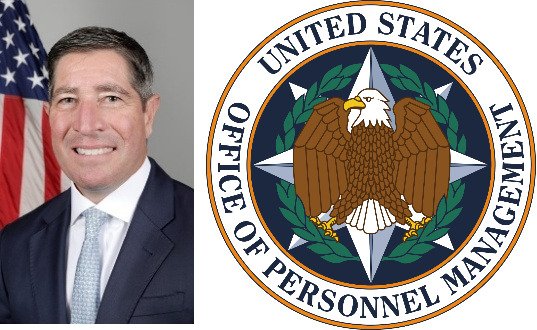
- Andreessen Horowitz’s “Head of Policy for a16z crypto,” Brian Quintenz, who has been nominated to serve as Chair of the US Commodity Futures Trading Commission.

- a16z Partner Sriram Krishnan, who serves as Senior Policy Advisor for AI under Trump’s White House AI and Crypto Czar: David Sacks.
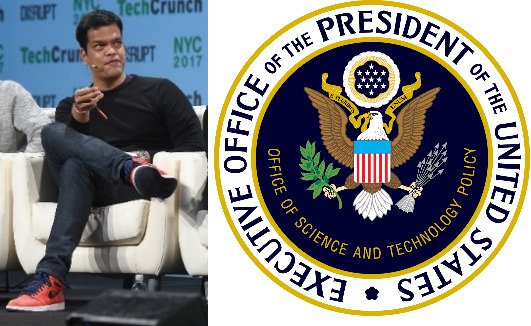
Trump’s newly created Department of Government Efficiency (DOGE) has also been filled with former employees of companies owned by Musk, who reinstated Trump’s Twitter account and bankrolled Trump’s presidential comeback, earning himself a position in Trump’s second administration as the magistrate of DOGE. Musk’s DOGE hirelings include at least 30 former employees of SpaceX, xAI, X, Neuralink, Tesla, and/or the Boring Co. Among these DOGE officials are at least two Musk cronies who have also been appointed by Trump to serve in other executive offices and agencies, including:
- SpaceX Vice President of Human Resources, Brian Bjelde, who serves as a Senior Advisor in the OPM.
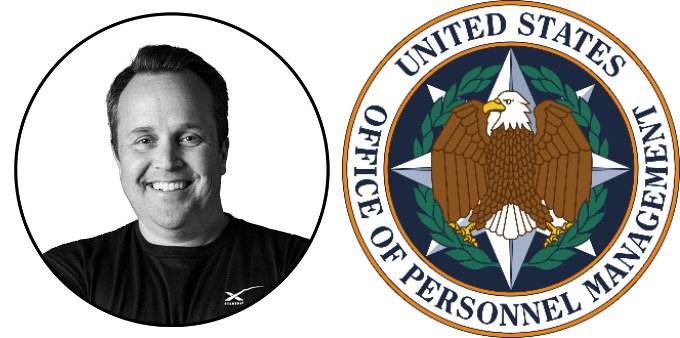
- Tesla engineer, Thomas Shedd, who serves as Deputy Commissioner of the Federal Acquisition Service at the US General Services Administration.

Other DOGE officials include at least four former employees of Palantir and at least one recipient of the Thiel Fellowship. As the head of DOGE, Musk outsourced to Palantir its stratagem “to build a new ‘mega API’ for accessing Internal Revenue Service records” whereby Palantir’s Foundry AI platform could “become the ‘read center of all IRS systems,’” according to Wired. Outside of DOGE, Musk’s xAI has partnered with Thiel’s Palantir “to Redefine Financial Services through Enterprise AI.” Before exiting DOGE, Musk called for the US Treasury to “be put on the blockchain” in order to “stop” an ostensible racket of “payments that are fraudulent or do not match the funding laws passed by Congress.”

But of all the PayPal Mafia technocrats who have garnered Trump’s favor, it is Sacks who wields the most command over the Trump administration’s scheme to overhaul the American financial system with blockchain DLTs and cryptocurrencies, including stablecoins, through AI fin-tech. One of Trump’s earliest executive appointments, Sacks has been tapped to serve as the White House AI and Crypto Czar and the Chair of the President’s Council of Advisors on Science and Technology (PCAST).
Sacks, like Thiel, holds a long a track record of stoking neo-conservative culture wars and bankrolling Republican politicians, thus fueling the rise of the new brand of rightwing jingoism that has metastasized into Trumpism. Both Sacks and Thiel have agitated neo-con culture wars as editors of The Stanford Review and co-authors of a book titled The Diversity Myth, which was a forerunner to the wave of “anti-DEI” polemics that undergird Trumpism. Also like Thiel, Sacks has financed the venture capital firms and political campaigns of Vance, who is also a contributor to the Heritage Foundation. Not only did Sacks fund Vance’s Narya Capital, but he also donated $1 million to a political action committee supporting Vance’s race for the Ohio Senate. Vance, who said that Sacks is “one of my closest confidants,” was later recommended by Sacks to be Trump’s VP. In addition, Sacks put together a $12 million fundraiser to support Trump’s presidential comeback.
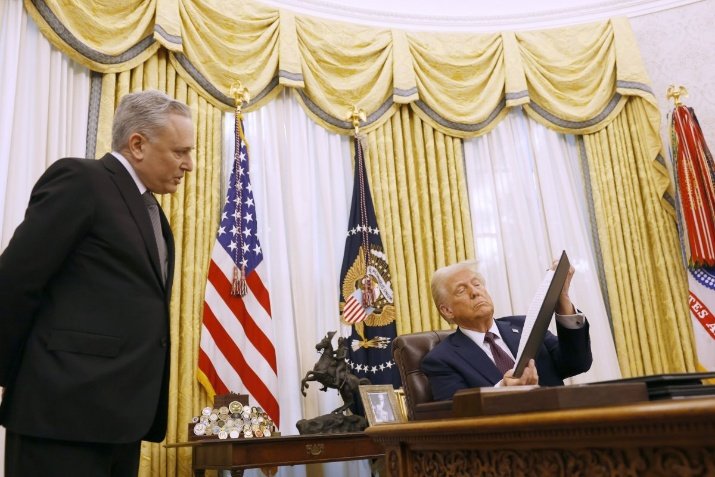
During Sacks’s tenure as White House AI and Crypto Czar, he has collaborated with his “close business associate,” Glenn Gilmore, to help Donald Trump Jr. set up a private pay-to-play “dining club” for rightwing elites, including business tycoons and politicians. Charging up to $500,000 per membership, the “Executive Branch Club” provides an exclusive venue where potential lobbyists of corporate special interests can “connect” with Trump’s cabinet and other high-level executive officials “without media interference.” For examples, the inaugural meeting of the Executive Branch Club hosted such cabinet officials as Commerce Secretary Lutnick, Treasury Secretary Scott Bessent, Education Secretary Linda McMahon, and HHS Secretary Robert F. Kennedy Jr. along with Sacks himself. Also in attendance were such corporate oligarchs as Keith Rabois, who is a PayPal Mafia mobster; Jensen Huang, who is the founder, president, and CEO of NVIDIA; and two of “the world’s richest crypto billionaires,” Tyler and Cameron Winklevoss, who founded the cryptocurrency exchange, Gemini, which has been charged with “selling unregistered securities” by the US Securities and Exchange Commission.
Notwithstanding concerns that Sacks’s “member No. 1” status in the Executive Branch Club poses conflicts of interest with his official capacity as White House AI and Crypto Czar, representatives of the club have assured that “Sacks has no financial interest in the Executive Branch Club, directly or indirectly. His involvement has been reviewed and approved by government ethics attorneys.”
As AI and Crypto Czar, Sacks has been appointed by Trump to chair the President’s Working Group on Digital Asset Markets in accordance with Executive Order (EO) 14178: “Strengthening American Leadership in Digital Financial Technology.” Section 1 of EO 14178 states that “[i]t is therefore the policy of my [Trump’s] Administration to support the responsible growth and use of digital assets, blockchain technology, and related technologies across all sectors of the economy.” Although Section 5 decrees the “Prohibition of Central Bank Digital Currencies [CBDCs],” Section 4 stipulates that the Working Group on Digital Asset Markets “shall propose a Federal regulatory framework governing the issuance and operation of digital assets, including stablecoins, in the United States.” While stablecoins are issued by corporations, commercial depository institutions, or “decentralized autonomous organizations” (DAOs), rather than central banks, they are nonetheless cryptocurrencies that can be digitally anchored to national currencies issued by central banks. Like CBDCs, stablecoins can also be digitally programmed for government-restricted purchases through blockchain smart contracts.
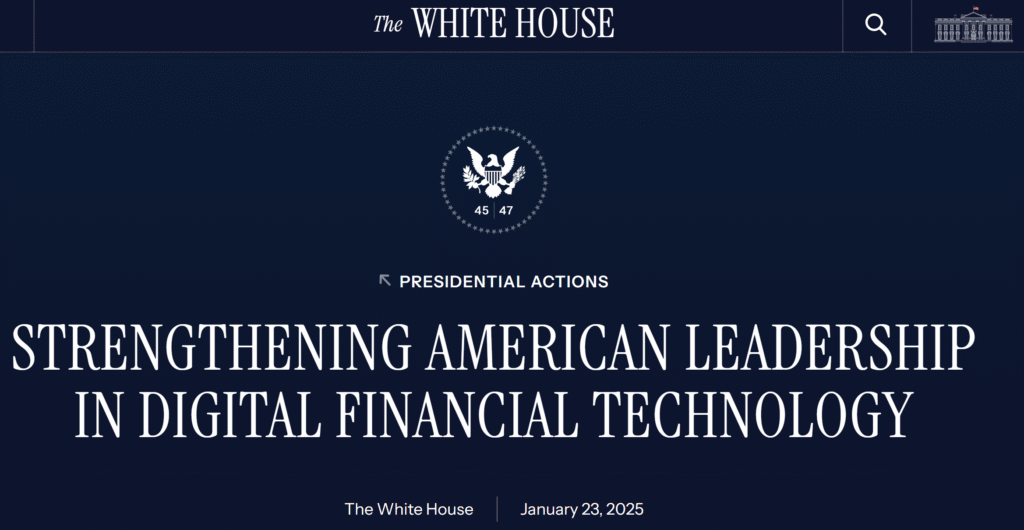
Just four months before Trump decreed EO 14178, he and his sons launched a stablecoin corporation, World Liberty Financial, with the help of Steve Witkoff, who now serves as the US State Department Special Envoy to the Middle East. World Liberty Financial, which is also bankrolled by “crypto billionaire” Justin Sun, has launched the USD1 stablecoin: a cryptocurrency that has its value affixed to that of the fiat US dollar. Other US dollar-linked stablecoins include PYUSD, which is issued by PayPal; USDT, which is issued by Tether and has been backed by Trump’s Secretary of Commerce, Howard Lutnick; and RLUSD, which is issued by Ripple and is supported by Bullish: a cryptocurrency exchange backed by Thiel. Additionally, Thiel is also invested in Ubyx, which is a stablecoin clearing system, and Plasma, which is a blockchain platform that is “purpose-built for stablecoins.”
Greenlighting government regulation of stablecoins, Trump has signed into law the “Guiding and Establishing National Innovation for US Stablecoins (GENIUS) Act,” which permits federally insured “depository institutions,” such as commercial banks, and “nonbank entities” to issue “payment stablecoins” that can legally “be used as a means of payment or settlement.” Licensed stablecoin issuers must back their outstanding stablecoins at a “1 to 1” rate with reserves that must be comprised of high-quality liquid assets, such as “United States coins and currency (including Federal Reserve notes)” or “Treasury bills, notes, or bonds.” Just a few weeks before Trump signed the GENIUS Act, Mastercard announced its plans to upgrade the “Mastercard Multi-Token Network,” which “is built to power programmable payments and stablecoin settlement,” in order “to support a growing portfolio of regulated stablecoins from issuers around the world.”
In addition to federalizing stablecoins, Trump has also drafted provisions for national government stockpiling of digital asset reserves comprised of non-stable cryptocurrencies. Section 4 of Trump’s EO 14178 directs Sacks and the rest of his Working Group on Digital Asset Markets to “evaluate the potential creation and maintenance of a national digital asset stockpile and propose criteria for establishing such a stockpile, potentially derived from cryptocurrencies lawfully seized by the Federal Government through its law enforcement efforts.” Subsequently, on March 6th, 2025, Trump issued EO 14233, “Establishment of the Strategic Bitcoin Reserve and United States Digital Asset Stockpile,” which directs Sacks’s Working Group to put together “a full accounting of all Government Digital Assets” that can be transferred to a US “Strategic Bitcoin Reserve” or a US “Digital Asset Stockpile.” Five days after the decree of EO 14233, the “Boosting Innovation, Technology, and Competitiveness through Optimized Investment Nationwide (BITCOIN) Act,” which codifies into Federal law the government establishment of a national “Strategic Bitcoin Reserve,” was introduced in the US House of Representatives.

Although neither a reserve nor a stockpile has yet been formalized, Trump publicly pronounced through his “Truth Social” platform that the US “Crypto Strategic Reserve” will hold a cache of Bitcoin (BTC) and other non-stable cryptocurrencies, including Ethereum’s ETH, Ripple’s XRP, and Solana’s SOL, each of which has been backed by one or more of the PayPal Mafia kingpins behind Trump. For instance, Thiel has poured hundreds of millions of dollars into BTC and ETH, and he also provided startup funding for OpenCoin, which would later become Ripple. In fact, the Ethereum blockchain network is the brainchild of a Thiel Fellowship recipient, Vitalik Buterin. Like Thiel, Sacks also invested hundreds of millions of dollars into ETH and BTC along with SOL before reportedly divesting just prior to accepting his appointment as White House AI and Crypto Czar. Additionally, Musk has also stated that he personally holds BTC and ETH while his SpaceX and Tesla companies separately own BTC holdings that collectively total more than $2 billion. Orbiting the PayPal Mafia nexus, Andreessen Horowitz’s portfolio has also included Solana and Ripple’s predecessor, OpenCoin.
Other blockchain and crypto fin-tech enterprises backed by PayPal Mafia bosses and adjacent VC technocrats include Layer N, which has been financed by Thiel’s Founders Fund, and Bitwise, which is bankrolled by Sacks’s Craft Ventures, along with Coinbase, Alchemy, OpenSea, Uniswap, and Maker, which are funded by Andreessen Horowitz. In addition, Dogecoin has been propped up by Musk, who is aspiring to revive his old X fin-tech corporation through his revamped version of Twitter. Partnering with Visa, Musk is aiming to upgrade his X-branded Twitter from a social media platform into an “everything app” that will integrate an “X Payments” digital marketplace streamlined with “X Wallets” and “X Money” primed to be denominated in crypto tokens through blockchain ledgers. It is worth noting here that Andreessen Horowitz, which is a corporate member of the Blockchain and Digital Assets Initiative of the WEF’s Center for Financial and Monetary Systems, helped finance Musk’s purchase of Twitter. It is also worth noting that Bilderberger and WEF member Sam Altman, who co-founded OpenAI with Musk, launched the Worldcoin cryptocurrency, which requires biometric authentication.

In sum, the PayPal Mafia oligarchs and VC disruptors behind Trump’s federal crypto innovations have been laying the groundwork for the 4IR fin-tech economy by pumping up the most valuable crypto coins while bankrolling the most essential blockchain networks, digital wallets, and crypto exchange platforms. To be sure, the digital wallet industry around school choice subsidies is indispensable to the blockchain–crypto infrastructure of the emerging 4IR economy, which is being geared up for the tokenization of all public subsidies through stablecoins that can be programmed by AI for government-restricted purchases. By interfacing public-private school choice partnerships through digital wallets that can intermediate stablecoin transactions, Trump is effectively synergizing the technocratic ambitions of the PayPal Mafia with the corporatist objectives of the Koch-SPN cartel behind Project 2025 in order to advance stakeholder capitalism through 4IR blockchain and crypto fin-tech. Indeed, Trump’s push for school choice fin-tech and stablecoins emblemizes the corporate-technocratic convergence of the neo-conservative, beltway-libertarian, and VC Silicon Valley arms of the Republican Party coalescing to usher in programmable crypto and blockchain data-tracking for AI social credit cybernetics in the 4IR.

The Ed-Tech/Fin-Tech Matrix of AI Social Credit Algocracy
The digital wallet industry around school choice corporatization is not only integral to blockchain stakeholder capitalism in the crypto fin-tech economy of the 4IR, but it is also integral to cybernetic surveillance capitalism in the AI social credit technocracy of the 4IR. By synergizing fin-tech with ed-tech through AI, digital wallet ledgers and learning algorithms can be cross-analyzed to extract statistical correlations between school choice subsidies and student outcomes. In the final equation, fin-tech/ed-tech feedback loops can be data-mined by AI to extrapolate predictive social credit analytics that determine not only how ESAs, tax-credited “scholarships,” and other school choice subsidies are allocated to students, but also how educational products and services are prescribed to students in accordance with their 4IR “career pathways” curriculums.

Setting the stage for the AI fusion of fin-tech and ed-tech, Trump proclaimed his mission to make the US the “world capital of artificial intelligence and crypto” during his special address to the WEF 2025 Annual Meeting. To achieve this mission, Trump directed AI and Crypto Czar Sacks to develop a federal government “AI Action Plan” in accordance with EO 14179: “Removing Barriers to American Leadership in Artificial Intelligence.” Trump also appointed Sacks to serve alongside the US Secretary of Education, Linda McMahon, on the White House Task Force on Artificial Intelligence Education in accordance with EO 14277: “Advancing Artificial Intelligence Education for American Youth.” In Winning the Race: America’s AI Action Plan, Sacks directs the US Departments of Labor and Commerce to collectively institute an “AI Workforce Research Hub” to “produce recurring analyses, conduct scenario planning for a range of potential AI impact levels, and generate actionable insights to inform workforce and education policy.” It is worth noting here that Sacks composed America’s AI Action Plan with Thiel hireling Michael Kratsios, who is the Director of the White House Office of Science and Technology Policy.
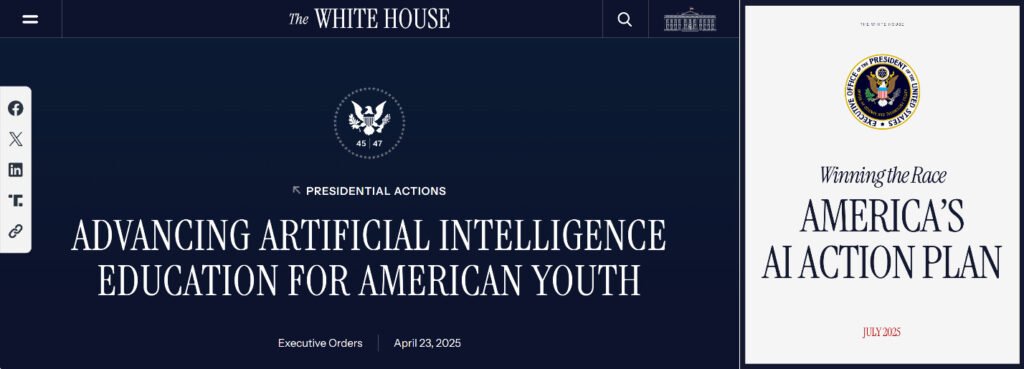
To advance cybernetic centralization of school-to-work planning under the directives of Sacks, McMahon, and Lutnick in accordance with EO 14277 and America’s AI Action Plan, 68 technology companies have signed Trump’s White House “Pledge to America’s Youth: Investing in AI Education.” These include multinational ed-tech companies, such as Pearson, along with Big Tech corporations, such as Accenture, Adobe, Amazon, Apple, AT&T, Cisco, Cognizant, Dell, Google, HP, IBM, Intel, Meta, Microsoft, Oracle, Qualcomm, and Salesforce, all of which partner or collaborate with the WEF. Other Big Tech pledgers include the American branch of the SAP parent company, which partners with the WEF, along with NVIDIA and OpenAI, the latter of which is another WEF partner that has also been funded by Thiel and Andreessen. Other ed-tech pledgers include McGraw Hill, Cengage, Ed Technology Specialists, and Clever, the latter of which has also been funded by Thiel.
Racing to attain “global AI dominance,” President Trump is leveraging Thiel’s Palantir, which has maintained US government contracts throughout the Obama and Biden administrations, operating AI systems, such as Foundry and Gotham, across federal departments and agencies, including the Department of Defense, the Department of Homeland Security, Immigration and Customs Enforcement (ICE), the Internal Revenue Service (IRS), the Food and Drug Administration (FDA), the Centers for Disease Control (CDC), the National Institutes of Health (NIH), HHS, and Musk’s DOGE. According to the New York Times, “Palantir representatives have also held talks with the Social Security Administration and the Department of Education to use the company’s technology to organize the agencies’ data.” It is worth noting here that Palantir was seeded with venture capital from the Central Intelligence Agency’s In-Q-Tel.
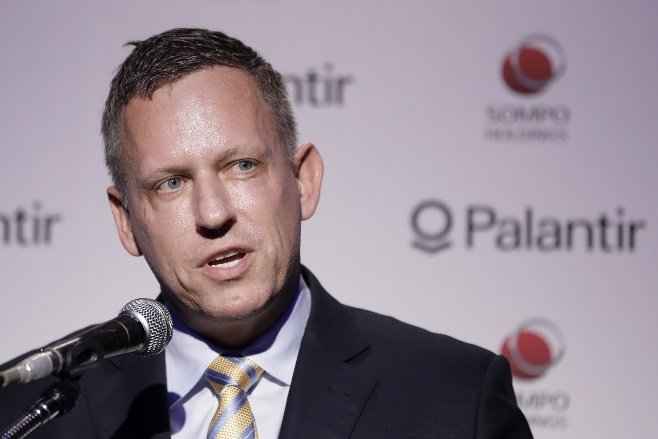
It is also worth noting that Trump’s General Services Administration has reportedly been preparing, under the leadership of Musk hireling Thomas Shedd, to utilize the new “AI.gov” website to launch “[t]hree powerful AI tools” conglomerated into “[o]ne integrated platform” in order to “[a]ccelerate government innovation with AI.” Although the official URL currently only posts Trump’s “AI Action Plan,” EOs, and pledges, an archived webpage records that the pilot site had previously planned to interlink an “AI assistant,” an analytics tool called “Console,” and an “all-in-one API,” which would interface with “top-tier AI models from OpenAI, Google, and Anthropic.” In the interim, OpenAI has been tapped by Trump to spearhead his Stargate AI infrastructure project, which is embarking to construct supercomputing data centers across the nation.

In brief, the Trump government is piecing together a pan-federal panoply of AI cybernetics through public-private partnerships with Big Tech corporations that have been propped up by the same PayPal plutocrats and venture capitalists who have likewise shored up the blockchain-crypto fin-tech enterprises which are concurrently being onboarded by the Trump regime. On top of ramping up the 4IR amalgamation of AI-tech and fin-tech, Trump’s PayPal Mafia bosses and their VC associates have also financed ed-tech products that data-mine feedback loops from student-learning analytics primed for psychological profiling and social credit scoring. For examples:
- Thiel has invested in Skinnerian adaptive-learning courseware, such as Clever and Knewton, which data-mine students’ cognitive-behavioral psychometrics.

- Sacks’s Craft Ventures has bankrolled Course Hero, which has acquired Symbolab: “a fully automated platform” that utilizes “adaptive learning” and other “machine learning algorithms” to streamline “AI-driven personalized learning” through cognitive-behavioral feedback loops.

- Andreessen Horowitz’s portfolio has included Udacity: an e-learning platform that “co-create[s]” online courses with an array of WEF partners, such as Microsoft, Amazon, Accenture, IBM, Intel, Facebook, and Google, along with NVIDIA and Affectiva, the latter of which engineers facial-recognition scanners and biofeedback wearables to data-mine students’ socioemotional psychometrics.

- Musk has funded Khan Academy, which platforms Khanmigo: an AI tutor-bot that leverages Chat GPT through OpenAI, which also operates its own proprietary AI tutor-bot and, like other GPT AI tutors, can data–mine students’ cognitive–behavioral and socio–emotional algorithms.
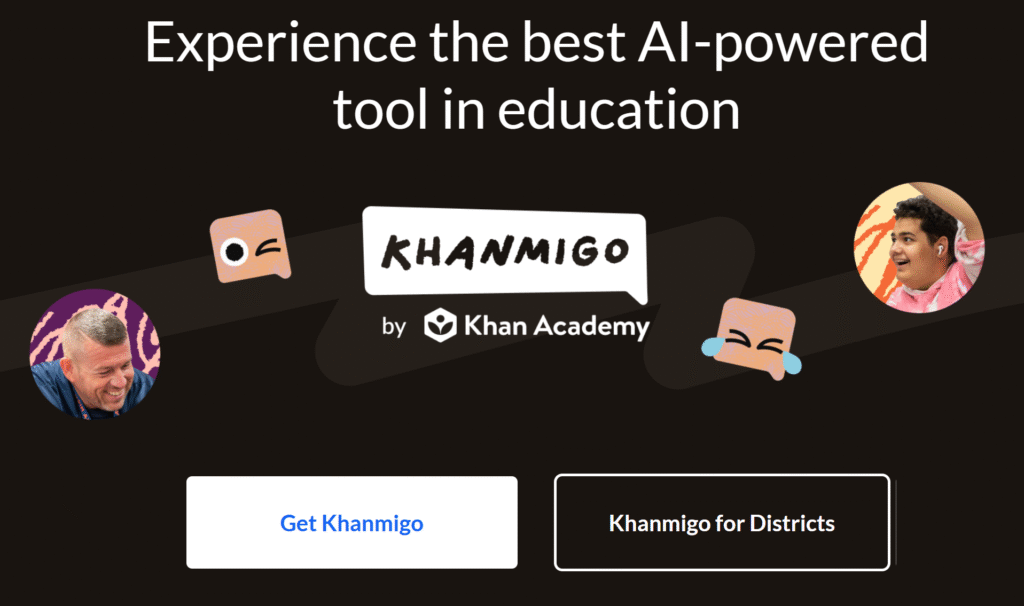
Altogether, the PayPal technocrats and VC disruptors behind Trump have been financing the foundational ed-tech, fin-tech, and AI-tech building blocks necessary to assemble the 4IR social credit cybernetics that the Trump regime is now putting in place. Full speed ahead, Trump and his Tech Barons are on course to upgrade school choice fin-tech from digital wallets to blockchain DLTs that log students’ learning algorithms and transfer programmable stablecoins which can be tracked and traced by AI to calculate predictive social credit analytics based on correlations between corporate-government financial inputs and education outcomes. Dawning the “Golden Age” of the 4IR, the social credit merger of ed-tech, fin-tech, and AI-tech is the endgame Trump card that will manifest a techno-fascist dream come true for the PayPal Mafia and the Koch-SPN syndicate. Welcome to the School World Order.

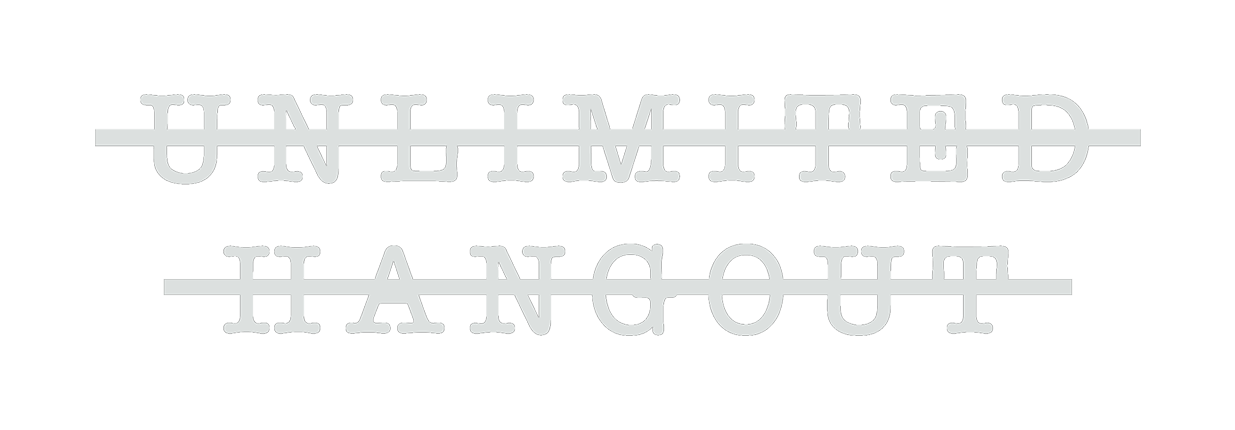




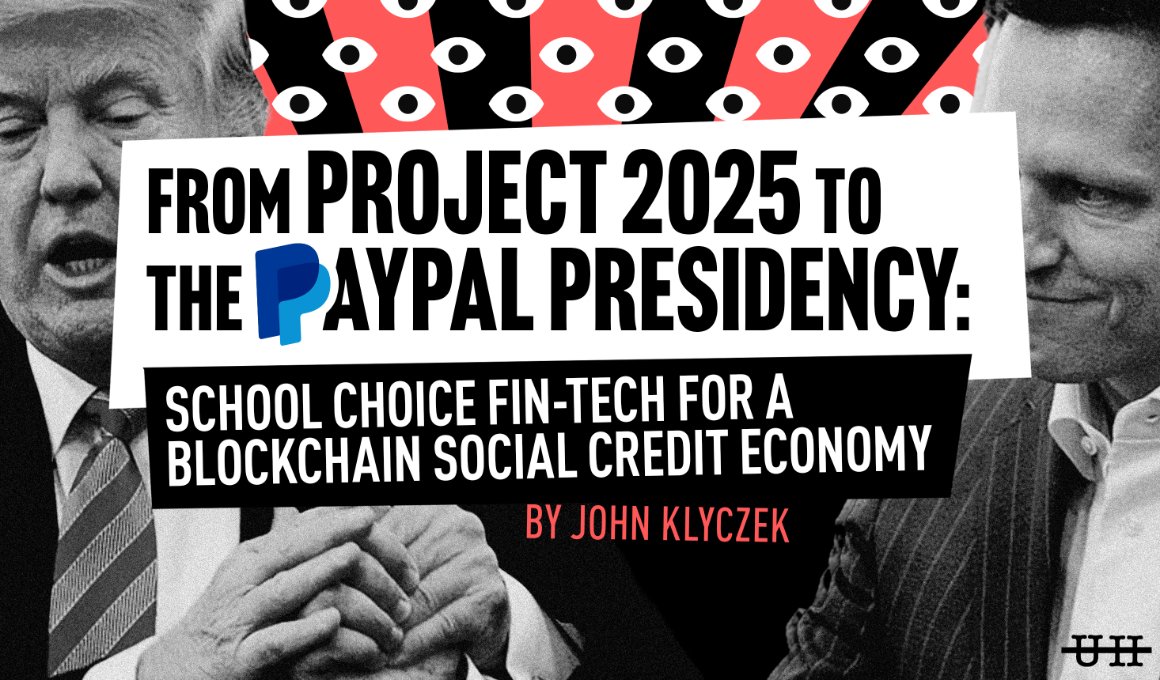




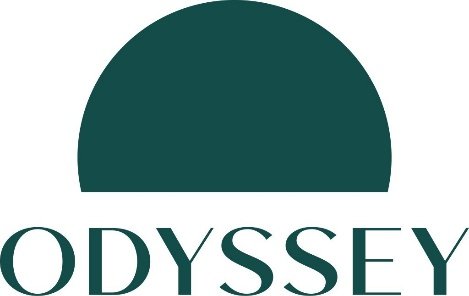
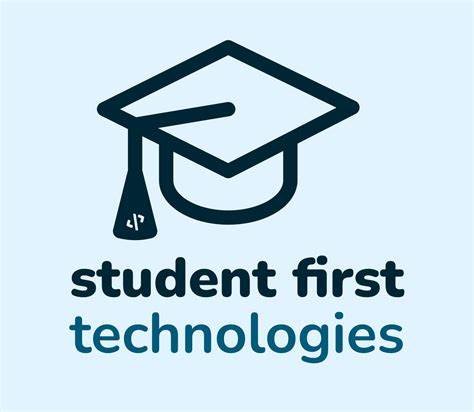
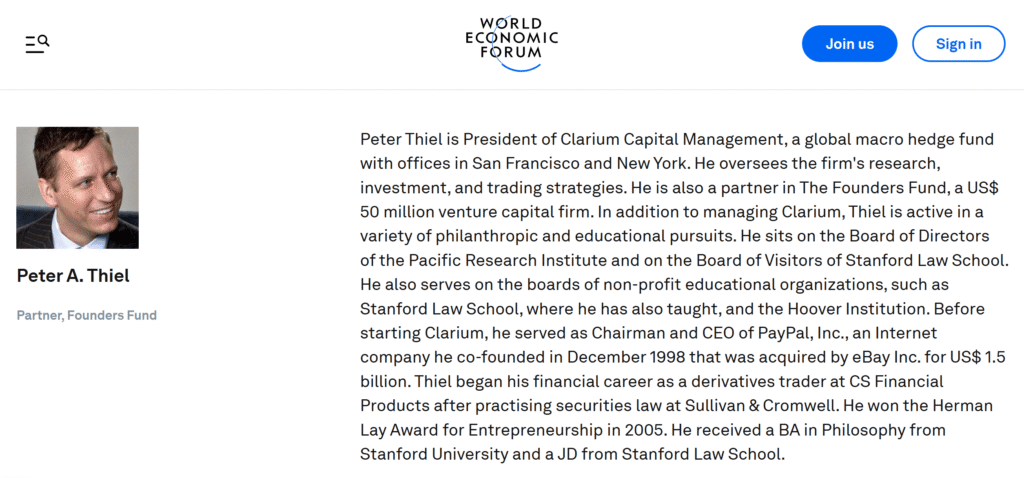

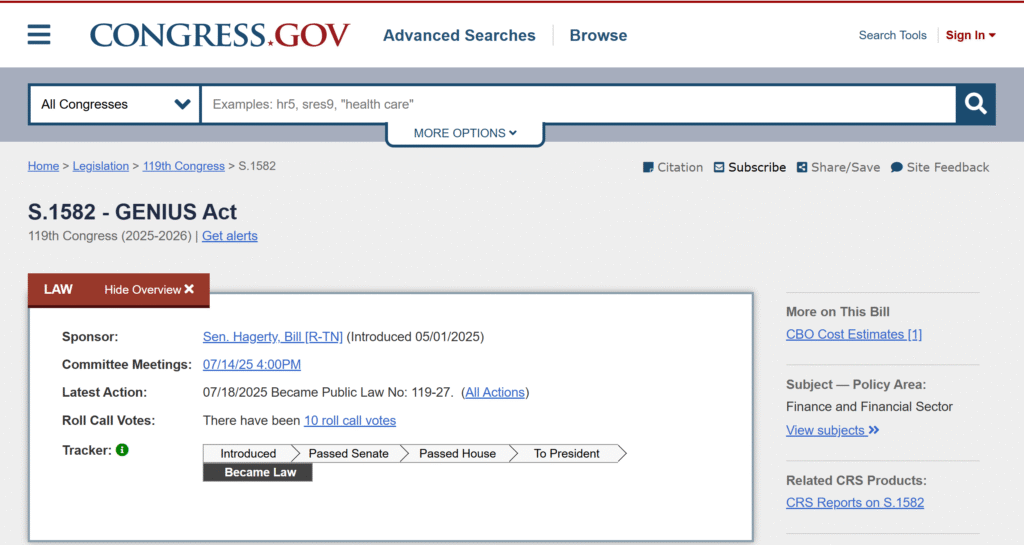




While I appreciate the tons of sources and information given here (plus the intense research involved in creating an article like this), it makes my head spin really quickly trying to get through it, especially with the hundreds of source links. It would be helpful for regular people like myself if you would add a concise summary to articles like this (for those who want freedom and truth but don’t believe in ANY of the systems put forth by powers that shouldn’t be). I mean no disrespect at all. Frankly, the whole of all financial systems, to me, feels utterly fake, made up, nonsensical (private people printing monopoly money and controlling economies and governments with it? Making it all digital so one needs a slave device to participate in psycho society?). It feels like everyone is conned into learning the intense specifics of systems that are false, misleading, dangerous, bent on enslavement. Anything from Bitcoin to stable coins to cash to crypto, in general, has been made up by people and ‘we’ buy in? It all feels like a bad dream at this point.
My my my. On the heels of this stellar revelation, we learn that the military is so full up with Palantir seed, that a…an appropriate metaphor here…shotgun wedding has been accomplished.
I keep getting the idea that these google=eyes tech critters cannot for the life of them figure out humans.
Frankly neither can I, but I may know what the machine nerds are. Out of place, it seems.
Fantastic research here, Mr. Klyczek. Thank you for the complete breakdown of where this intrusion on our education is happening and who is behind it ultimately. Nothing good can ever come from the array of sponsors that you have shown here. There is no altruistic intent on any of their pursuits now, just like there never were any before. Rockefeller used to hand out dimes to poor kids. Yay! He funded education for America! More yays! Now we have the Koch’s, Thiel, Musk, and all the other play friends to take our children into higher learning. Dark days ahead
Wow. I just spent 90 minutes reading this. Wild stuff. Makes a ton of sense. Big Tech boys angling to make a ton of $ as they angle on the DTJ administration.
Looks like DTJ family and peeps in his admin look to cash out on the technocrat 4IR.
Good lord. Very impressive and purposely head spinning. Have you been out in the world? In what scenario do you think Americans will just accept social credit system? These companies can plan all they want, but there are always counters moves being made. The fact that you used Project 2025 in your title tells me that this is just a smear against Trump. Why has Trump become the ultimate bad guy? Because he has all the dirt.